FORT POLK, La. -- The opponents shake hands, walk to opposite sides of the octagon and face each other. Once the 10-minute clock begins counting down, they collide in the middle of the ring, flinging each other against the chain link fence surrounding the ring. Inevitably, one fighter pulls, slams or sweeps the other to the mat, and the two wrestle for dominance. They pry with feet and elbows, slap heads, knee rib cages and punch abdomens.
Fort Polk held a combatives tournament July 25 at the 1st Maneuver Enhancement Brigade Gym to determine the best fighters of regulation Army combatives. Members of the 115th Combat Support Hospital organized the tournament.
The Army combatives program began in 1995 to fulfill a need: To have a modern, functional fighting program that Soldiers could practice at any time. The program is a mixture of several different styles of martial arts including Brazilian jujitsu, Greco-Roman wrestling, collegiate wrestling, tae kwon do and boxing.
"We've taken the best of all of it and put it into a program," said 1st Sgt. Robert Callahan, 115th Combat Support Hospital. "That's why they call it mixed. There's no set way of boxing, kicking or grappling."
Army combatives plays out like a sport with the audience cheering those in the octagon and teams rooting for their own members, but it is also a training tool that continues year round because of its potential use in theater.
Every Soldier on post is trained in combative techniques. Post units put together teams of no more than 14 fighters with at most two representing each of the seven weight classes. In the preliminaries held July 24, 177 Soldiers fought to be narrowed down to the 28 that competed July 25. Those placing first or second in their weight class at Fort Polk will go on to the All-Army Combatives Tournament Oct. 1-3 at Fort Benning, Ga., where they will compete against other post teams.
Brig. Gen. James Yarbrough, Joint Readiness Training Center and Fort Polk commander, congratulated the finalists and teams that scored the most points.
"If you never run a race you will never win," said Yarbrough to the fighters. "I think you're all winners. I don't care whether you placed first, second, third or fourth, you wouldn't be here if you weren't the best on this post of 10,000 Soldiers."
Matches are judged on a point system. If the 10-minute round runs out without a submission, points based on fighting moves against the opponent are awarded to the fighters to determine the winner. Most of the matches, however, ended in submission when one of the fighters tapped the canvas to indicate the other won.
"It's not about strength, it's about technique," said Callahan. "You're going to go against different fighting styles and body types and it gets you better development as a Soldier."
Weight categories are not gender-exclusive in Army combatives. The Fort Benning rules, which Fort Polk follows, give women a percentile weight advantage over men in each category. In the finals, women comprised the top four placements in the flyweight division and second place in the lightweight division.
"It doesn't matter if you're male or female," said Sgt. 1st Class Veronica Soto, 115th CSH, the non-commissioned officer in charge of the Fort Polk Combatives Tournament and one of its referees.
One referee stayed in the ring with the fighters, hovering nearby to make sure fighters made no illegal moves while a panel of referees sat outside the cage scoring points in case the match ended without submission.
"I've got to commend our referees for doing their job," said Yarbrough concerning safety. "Just short of 200 fights and we sent one guy to get an X-ray yesterday, but his bone wasn't broken and that was it."
"The fight was safe because they were briefed on all the things they had to do and what would disqualify them," said Soto. "We did a whole week of referee clinic. They knew what they needed to see to disqualify anybody. All the rules were laid out and that's how we accomplished a safe tournament."
"We're teaching submission here, but in combat, we're not teaching submission," said Callahan. "The Soldiers tap so there is no further injury so they can continue to fight the next day. A sparring ethic is what we're trying to accomplish."
The purpose, though competitive, is to train Soldiers for real combat.
"The whole purpose of this tournament is to make sure we have a lot of Soldiers trained proficiently so when they go to war and something happens in close combat, they know how to react," said Soto. "The combatives creates muscle memory so that they can defend themselves in case of any danger. Nobody knows how close they may be to the enemy."
Callahan postulated on a close-quarter combat situation
"You're going through a door and get hit by an enemy," he said. "We're not going to win the war by hand-to-hand combat and the spirit of fighting is to maintain your defense until another person shows up with a weapon to help you out."
Below are finalists in each category:
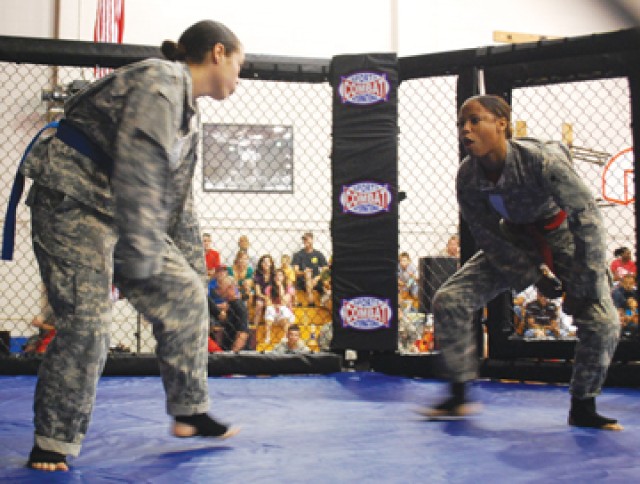
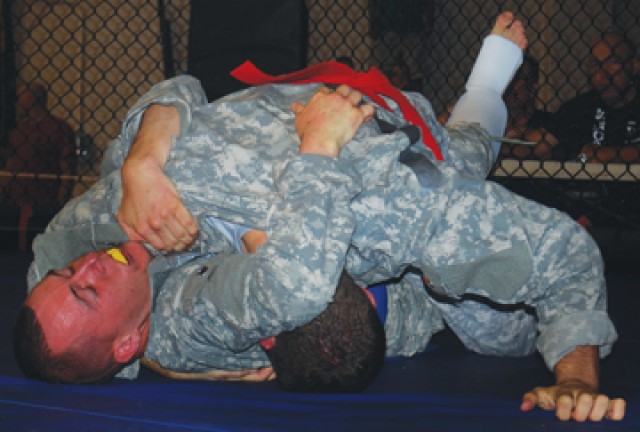
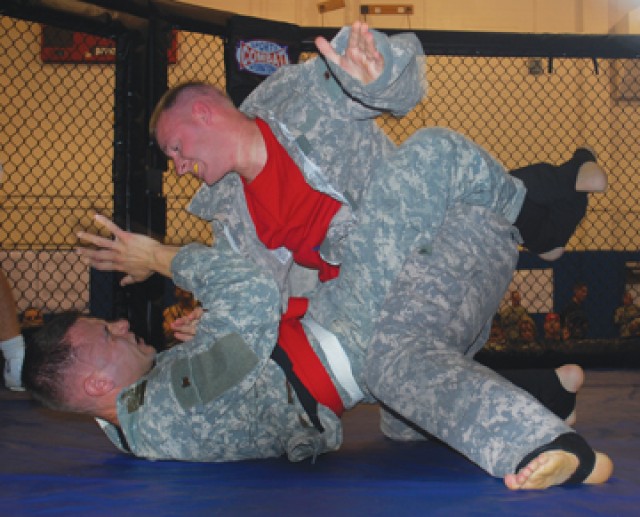
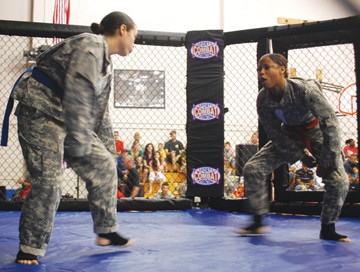
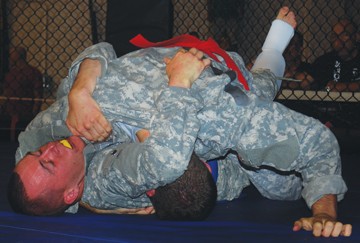
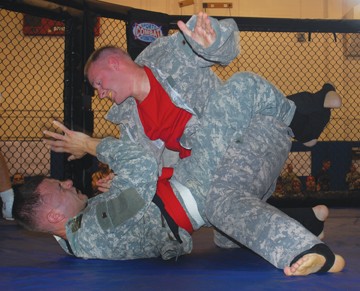
Social Sharing